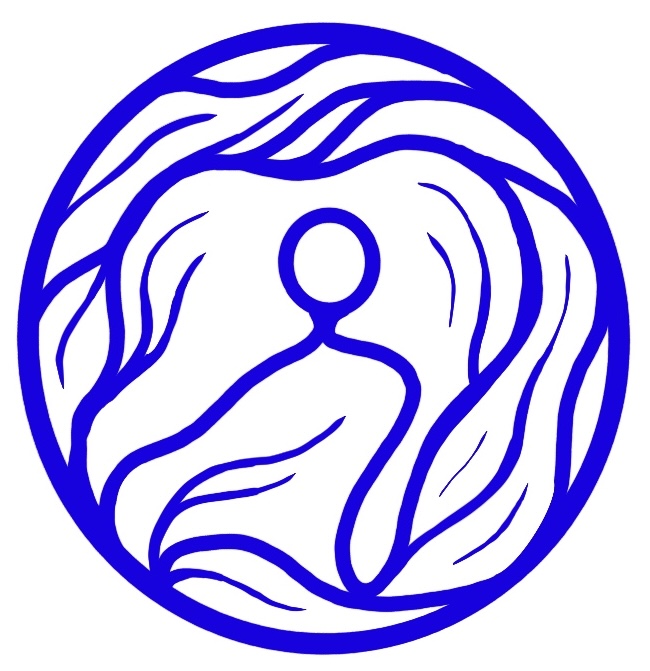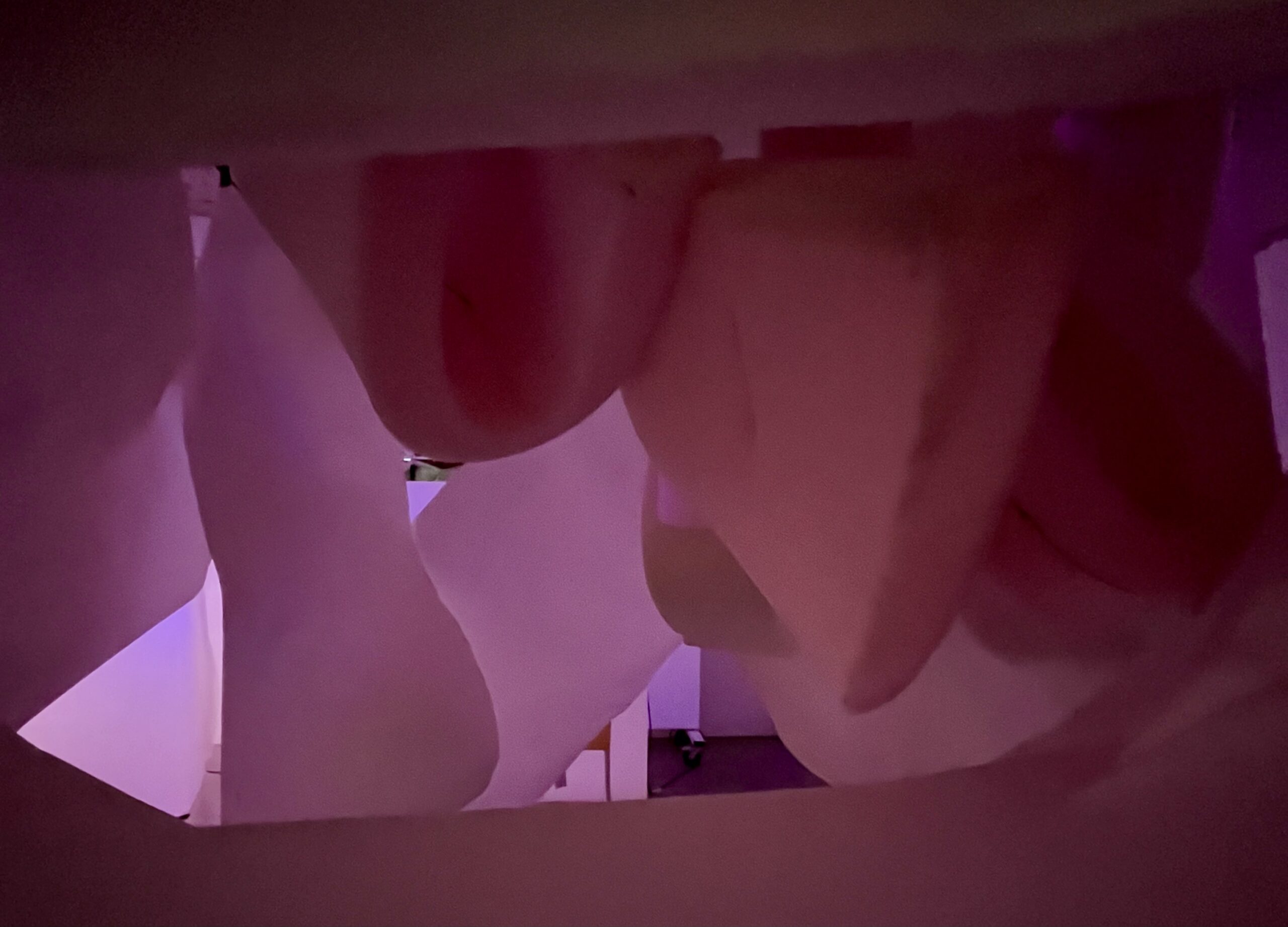Abstract
This essay is a summary of the work that has been done regarding the research question “How can time be manipulated?”. Both theoretical and practical research have been done throughout the year to find answers to this question. The theoretical part is focused on identifying spatial elements that contribute to feeling present. The findings from the theoretical part are taken further into practical research by using certain elements of the theoretical research to dive deeper into the research question “How can time be manipulated?”. Merel first discusses what time itself is, followed with the conclusions on the research question based on several spatial projects that are reflected on and further developed.
Theoretical research
The theoretical research is called “Ambiosati”. This research is focused on identifying spatial elements that contribute to feeling present. The research was started based on the increase in people who experience stressful lives. Merel believes that our surroundings influence our stress, and she wanted to use this research to be able to design it in a positive way and to reduce stress. Therefore, the paper refers to this as Ambiosati, where the surroundings (ambio) are creating and fostering the experience of mindfulness (sati), which normally a person would need to practise from within, but with Ambiosati, the influence of the surroundings is stimulating mindfulness in itself. The paper uses literature research, (auto-)ethnographic research and case studies to discover the elements.
Five spatial elements came forward as a result of the research. It is important to interpret ‘spatial elements’ in the broadest sense of the meaning due to some of the findings being more spatial concepts that are directed towards different designs with similar experiences.
- Concept of Yugen. This is a Japanese concept that refers to the experience of something unknown or hidden, creating the unknown or a mystery. This concept can be used in designing by using boundaries in different scales and through different objects that create an unknown space within the space.
- Feeling detached from the urban world. This was achieved in the case studies through the view of natural phenomena (e.g. the sky, water, grass) but nothing more due to the boundaries of the space. By excluding the visuals and the sounds of the urban world, although placed in the middle of an urban area, one can experience tranquillity and lose the stress that comes with an urban lifestyle.
- Time indication. Both case studies had different time indicators, and the first site did not even have clock time. This experience created somewhat nervousness in the beginning but continued into serenity and even the experience of slowed down time. Only natural indicators could tell time (e.g. the movement of the sun or the wind). but that was in no way similar to the pressure experienced by clock time and the changes were also experienced slower which resulted in a slower experience of time.
- Experience of silence, where the boundaries of the space can block out sounds from the surroundings. In this research, silence is not seen as ‘no-sound’ but rather as non-triggering sounds (e.g. loud traffic sounds vs. moving leaves). The difference is again also connected to the experience of time, where if there are a lot of different sounds, the time can go slow, however, this is often not experienced as calm. Therefore, sounds or their absence are important to designing Ambiosati.
- Movement in the space. This can be created by the use of natural elements such as water or trees that move due to the wind or circulation in the space that creates the same effect. However, this concept also refers to the movement of its users, where it is important to have free movement through the space. This is created by having enough negative space and eliminating predetermined seating arrangements.
These five spatial concepts are deemed necessary to design ambiosati. Combining the concepts can strengthen the experience of ambiosati. The concepts also strongly influence each other, and one spatial element can be used to implement several of the concepts.
Practical research
Merel was extremely intrigued by the discovery of the time indication in her paper and immediately knew this was a part that she has been struggling with throughout her personal life as well. Therefore, she continued her practical research with the research question “How can time be manipulated?”.
Longing to slow down
Merel’s generation is referred to as the burn-out generation. In her network, she hears the topic of slowing down, losing time, and feeling pressure come up so many times that it feels like it is in every conversation. Why is this epidemic of burnout suddenly arising so quickly?
An important factor is the work lifestyle. The pressure of deadlines, the ability to compare oneself to anyone, and the blurred boundary of being at work or not at work due to computers all contribute to the difficulty of dealing with the stress of current jobs. Helga Smith explains that this is part of the time-pressure paradox. As a society, we have never worked this few hours in history. However, the pressure of the work is experienced in such a way that it seems to be way more. There is a need to create more time in a day, to have more time to finish the deadline, to have more time… But having more time is not what is going to relieve this pressure. It is the pressure that creates this stress.
Secondly, digitalisation also adds to the stressors of daily life. The constant mode of being reachable is something our brains do not have the mechanisms to fight against. On top of that, social media and games are made to keep you hooked for economic reasons. Our brains do not have the defence systems they need to not interact with the short but high-dopamine hits they get from said activities.
So where do we begin with tackling this wicked problem? Merel believes the key answer is looking at time and how it is experienced.
What is time?
The first research question was “What is time?” to understand the essence. It started with making by doing, which resulted in entrapment to look at what time is when “nothing” is experienced. The body warmed up the confined space, the material started to get structure, the illusion of silence. The distinction between clock time and the experience of events happening is a big discovery in this research. The clock time comes with pressure, deadlines. The “other time”, so to say, is the experience of events happening, seeing change. Humans have made up the concept of time, which makes it an illusion, something that is not tangible. Now that it is clear that it is not tangible and can be described as the experience of change, the research can continue.
How can time be manipulated?
The brain measures time by experiencing stimuli and change. The body is the tool to do so. So when many or (almost) none of the senses are stimulated, the experience of time is manipulated. Together with the theoretical research and the knowledge of researching “what is time?” was the starting point of the practical research.
Balloons
During the making, an idea arose to use balloons to create a small space to stand in or walk through. The balloons are used because they stimulate almost all the senses (touch, sound, smell, and vision). The goal was to experience how the stimulation of several senses influenced the experience of time. Next, the lights will be turned off so the glow-in-the-dark balloons light up and fade away. This eliminates one sense stimulation. The space between the balloons was little, to create a minimum of negative space once the body was in the middle.
Waterdrop
The knowledge gained from the balloons was used for the next experiment: the water drop. The silhouette of the balloon project was used to make a delicate hanging object that would let one drop of water pass slowly. The water took a long time, creating a form of anticipation that slowed down the experience of time. The focus was solely on the water drop.
Due to the instability of the construction, after a certain number of drops, the whole structure flipped, and the remaining water dropped in one go. This created a loud activity that demanded attention.
Here, time is experienced in two ways: very slowly passing by, waiting for the water to drop, and knowing that it will at some point. The second experience is in momentum, a second, the sound and movement splashing you back into the ‘now’.
Hug
After finding anticipation as part of manipulating time, the next project focused on the element of it feeling like a hug. Different experiments showed the importance of the use of negative space and what that created for the body. These spaces create the feeling of a hug, which slows down time by putting (soft) pressure on the body. The balloons surrounded the person as a whole, and due to almost no negative space, it could feel like a hug. Only the material was not right. So the next step formed by combining the waterdrop and the balloons into anticipation & hug. This is when several structures were created, expanding in size to make it a space to move through (which was deducted from the fifth theoretical finding). The movement of the space resulted in an unexpected next step: placing the structure in front of a doorway. Suddenly, the material transformed, and it created the feeling of a hug around you.
Detachment
This new location also showcased the second theoretical finding: detachment. The used material was plastic and it was formed by the flow of the air conditioning. Therefore, before entering, one would not see the end of the doorway, or what was behind it. It was placed against the sunlight through the windows so one could only conclude that it was a bright area behind it. When walking through the plastic, one is surrounded by it, almost as if the plastic is consuming you. It is difficult to see what is coming nex,t and the boundary between one’s body and the materialistic world is blurred. This concept also contributed to the concept of Yugen (the first theoretical finding) and contributed to the experience of slowed-down time because the boundary between the mind and the space becomes blurred.
All these iterations of the project(s) resulted in the final object;
This object combines the elements of anticipation, feeling of a hug, detachment, and small negative space into one experience. The user can walk through it or stand in it. The water drops from above while the foam puts pressure on the body to create the feeling of a hug. The paper surrounding the body creates an experience of layering. which results in a slight detachment. To add more focus on the movement the body makes, the ‘floor’ of the object is made of pebbles, creating a sound when moving one’s shoes and when the water hits the pebble. The smell of lavender was added based on research, which says it is a calming scent. However, the lavender was not experienced well enough for it to say it worked.
In conclusion, time can be manipulated by using design to create the feeling of receiving a hug by the space, feeling detached from the outside (and frantic) world, and having an anticipatory element in the design.

